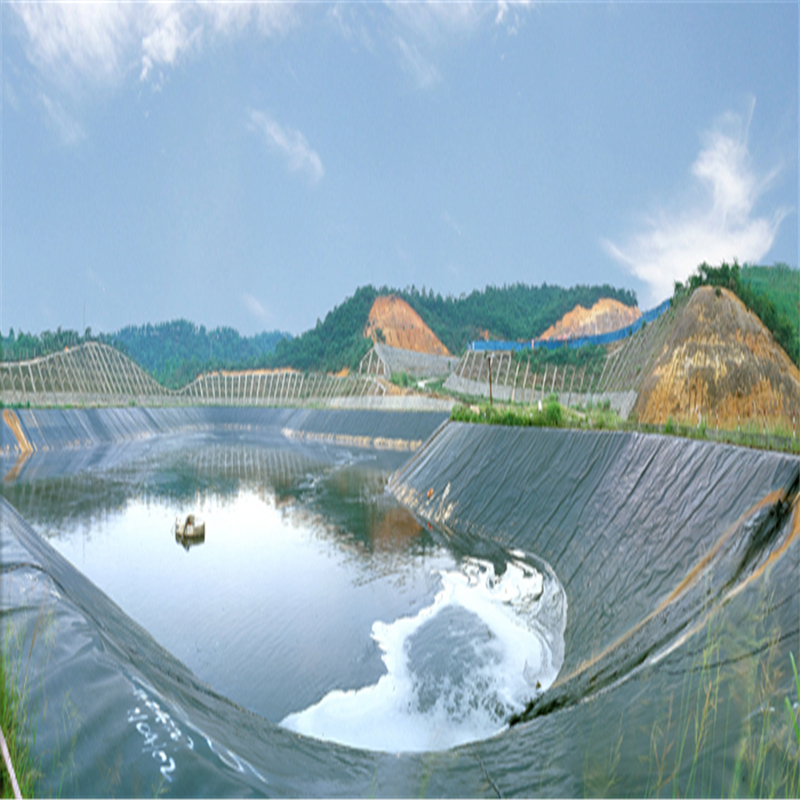The composite geomembrane anti-seepage structure is composed of four layers: base surface, composite geomembrane, protective layer, and block stone (or concrete) slope protection. The design of each layer is described as follows:
1. Base surface design
In order to prevent the filling soil layer on the composite geomembrane from sliding along its surface and increase the stability of the protective layer (including the protective surface), the surface of the upstream membrane dam shell was excavated into a platform stage with a height difference of 0.3m for each level and a horizontal width. According to the slope ratio, the slope is designed to be 1:1.0. After the excavation is formed, the bricks, stones and root trees on the surface are removed, and the surface is tightened and leveled with a clapper.
2. Composite design
According to the main features of the product, combined with the specific conditions of Zhoutou Reservoir, the WCD-1 composite geomembrane with two cloths and one membrane was designed and selected.
3. Protection design
The anti-seepage effect of composite geomembrane depends on the integrity of the plastic film during construction and operation. In order to prevent trampling by humans and animals, damage to animals and plants and reduce the effect of light and heat, because they are polymer chemical fiber polymers, they should be especially protected from sunlight. Direct exposure, so a protective layer should be laid on the composite geomembrane.
The particle diameter of the protective layer should not be too large, otherwise the composite geomembrane will be punctured. Generally, the particle diameter of the protective layer should be approximated by the following formula. For safety reasons, the maximum particle diameter d of the actual soil material is required to be no more than 6mm. Therefore, this project uses sieved silty clay, and other requirements are the same as the filling requirements of the dam body soil material. The protective layer is 200mm, the bottom 100mm is made with a sieve, and the upper 100mm is made with a non-sieve. For non-sieving soil, other debris such as larger rocks should be picked out.
4. Face protection design
Because the slope of the dam is a water-retaining structure, it has to withstand the pressure of wind and waves, so it must have protective measures. The design of this project adopts dry-laying massive stone protective surface. The face-protecting block stone must be hard, dense, weather-resistant for a long time, and have a certain weight, able to withstand the pressure of wind and waves and the scouring force of water. The weight, Q and thickness of the protective surface block are determined with reference to the method in Appendix D.3 in the "Code for Design of Embankment Engineering" (GB50286-98). After calculation: take the thickness of the dry block stone protection surface t=0.3m.
In order to prevent wind, waves and currents from taking away the clay particles of the protective layer of the dam shell, gravel (sand gravel) with a thickness of 0.1m is laid under the block stone protective surface as a cushion and filter layer.
